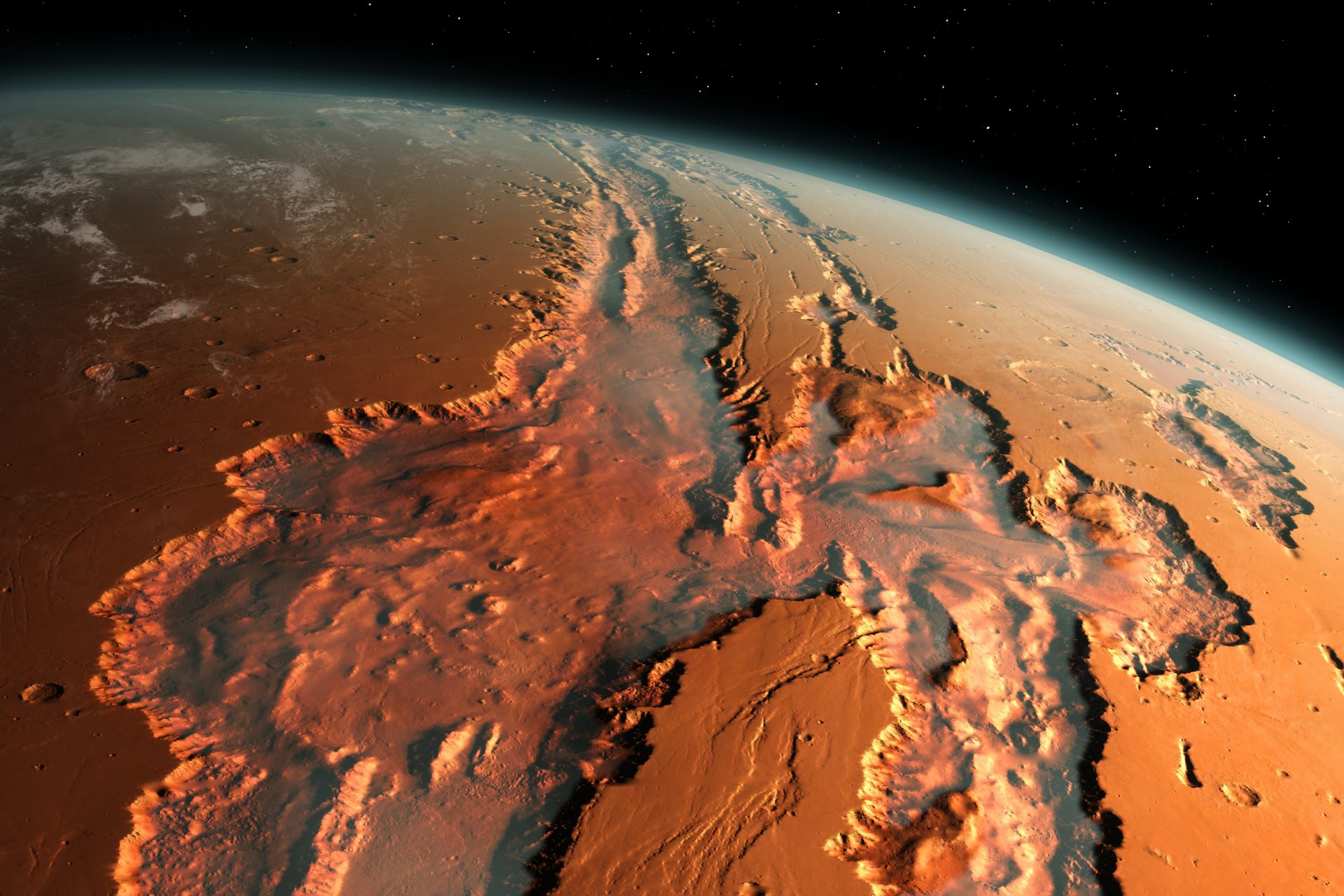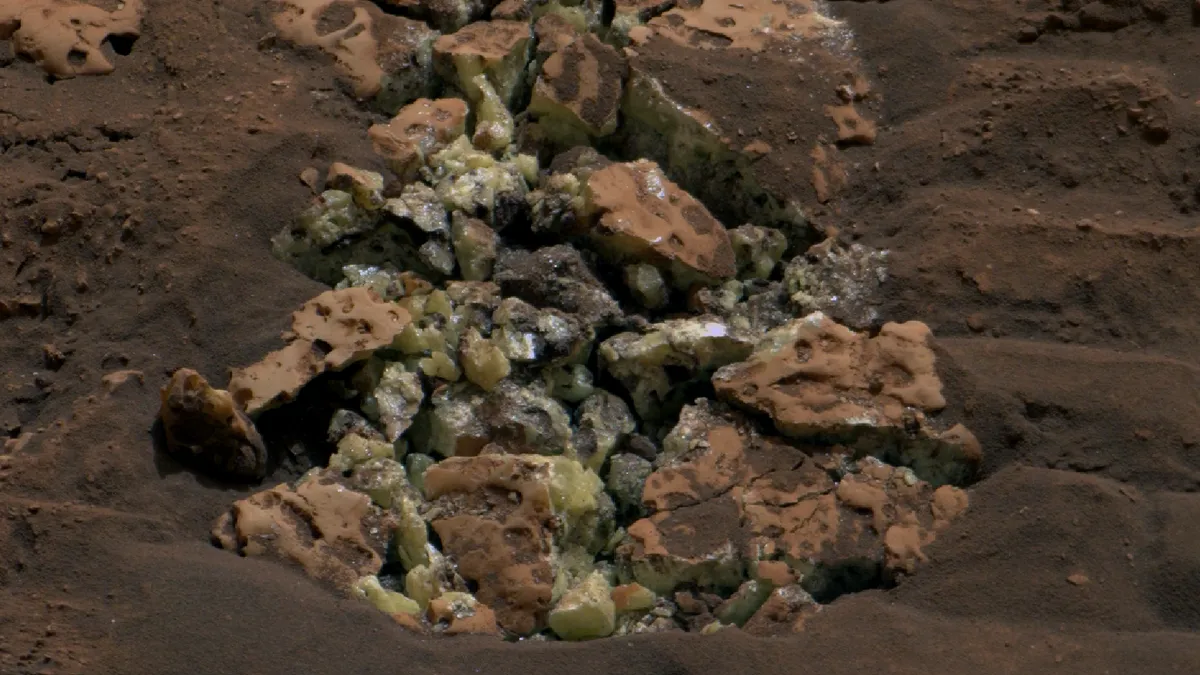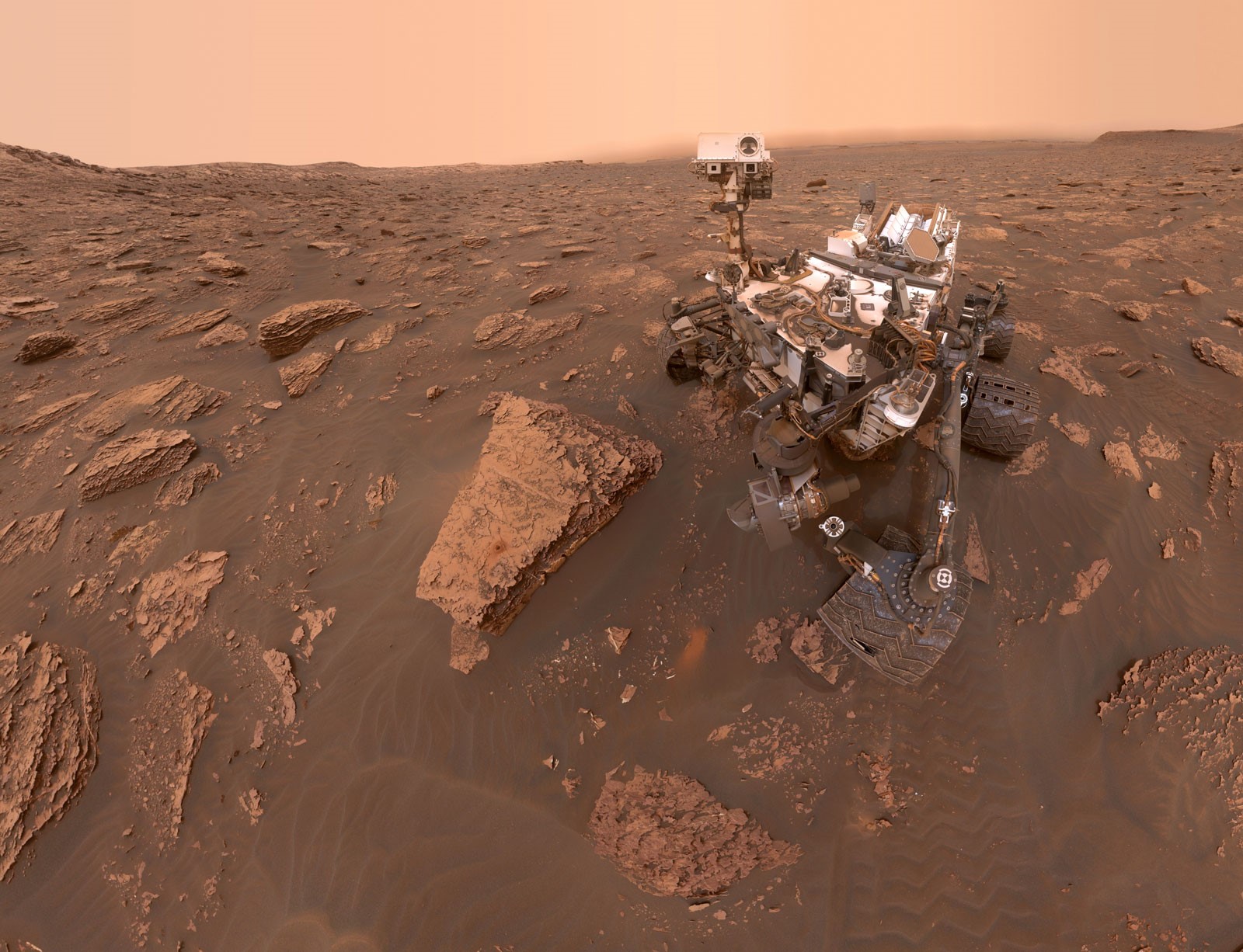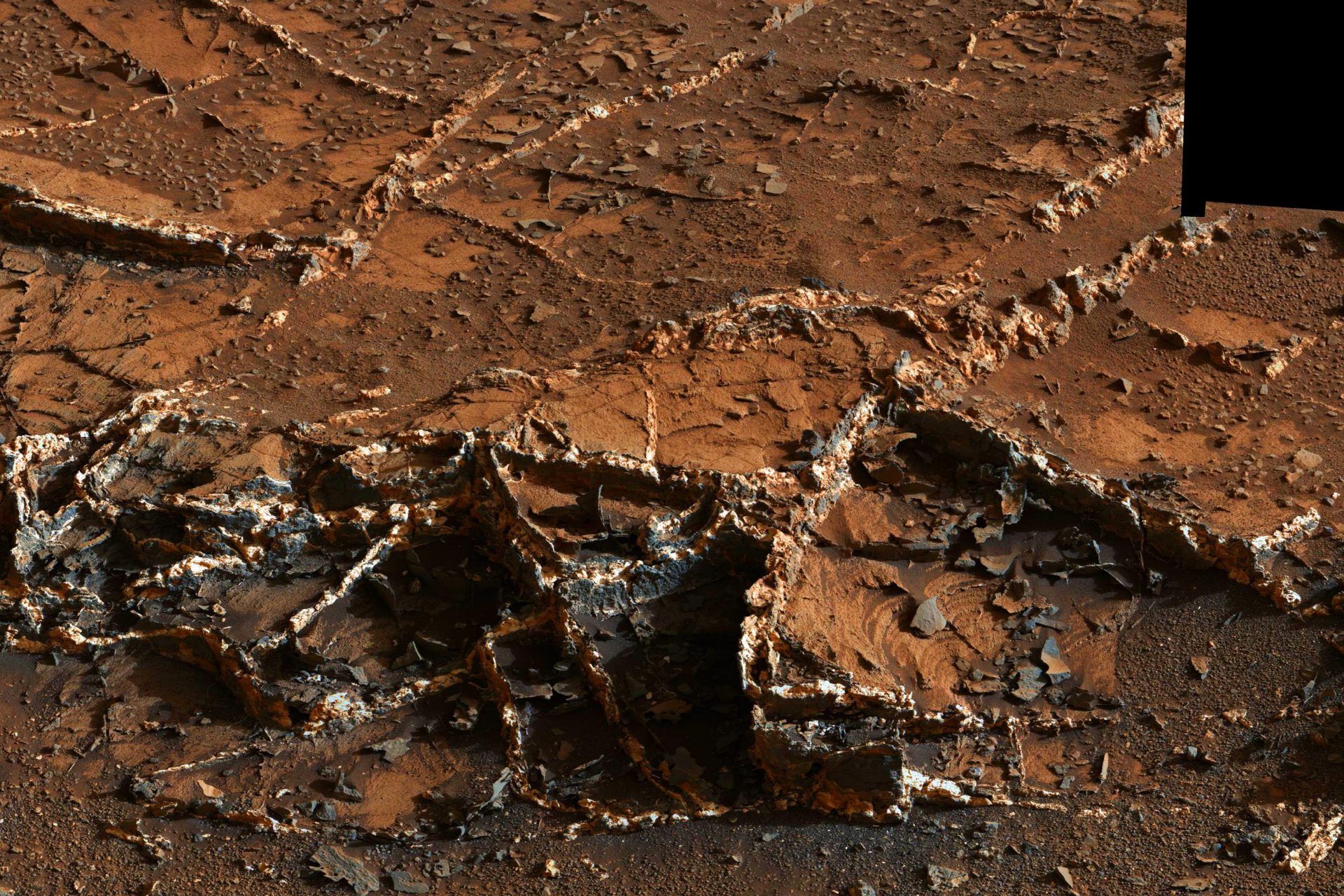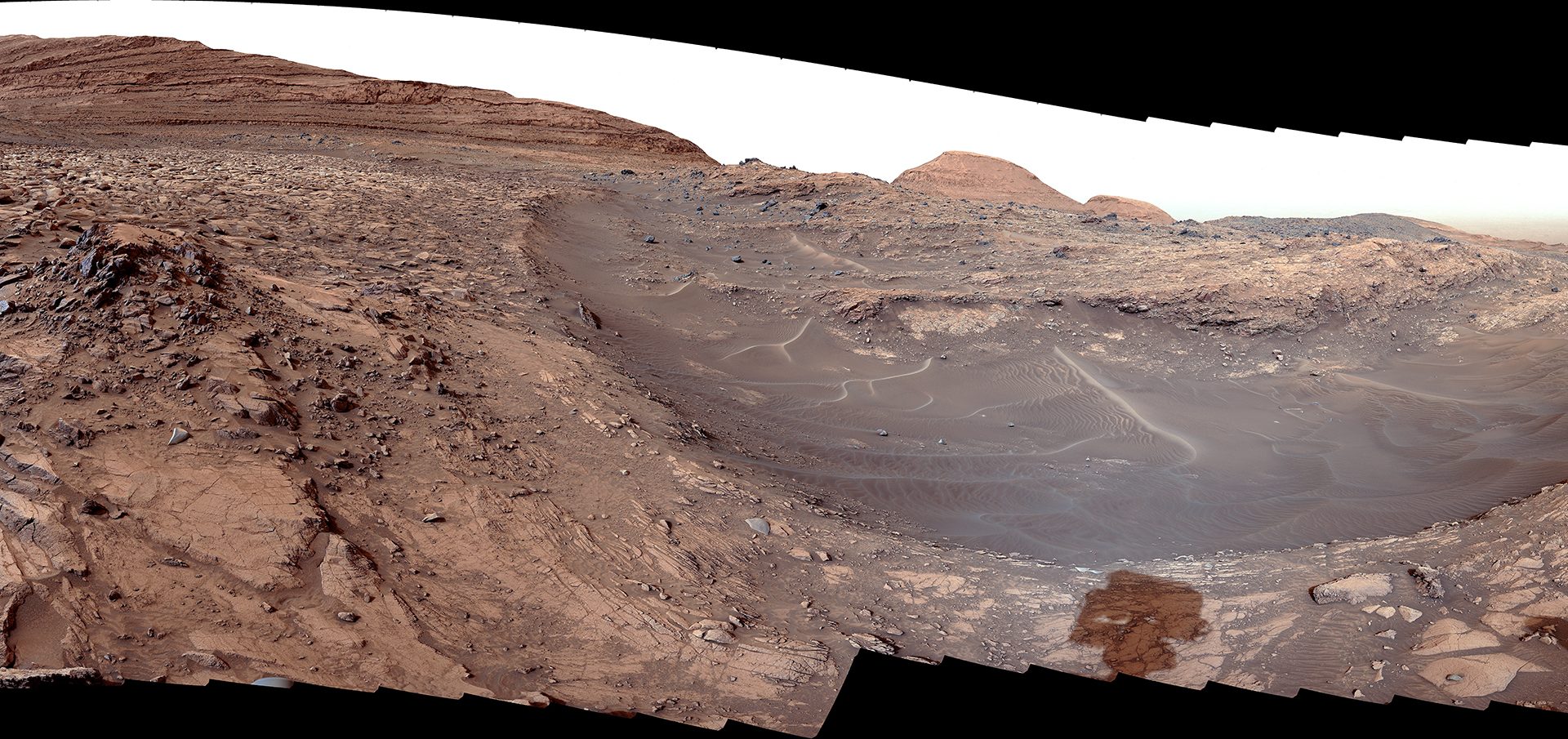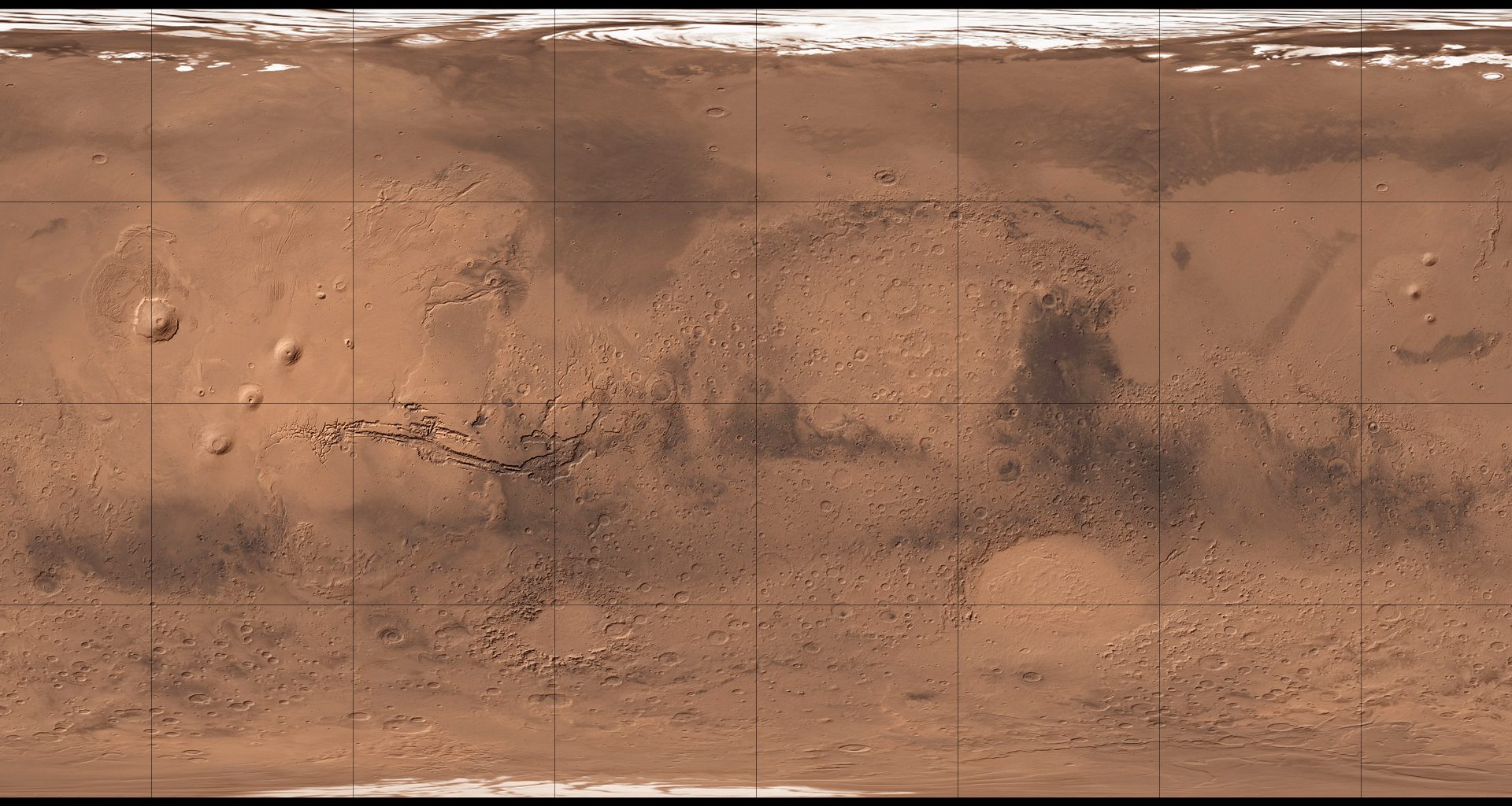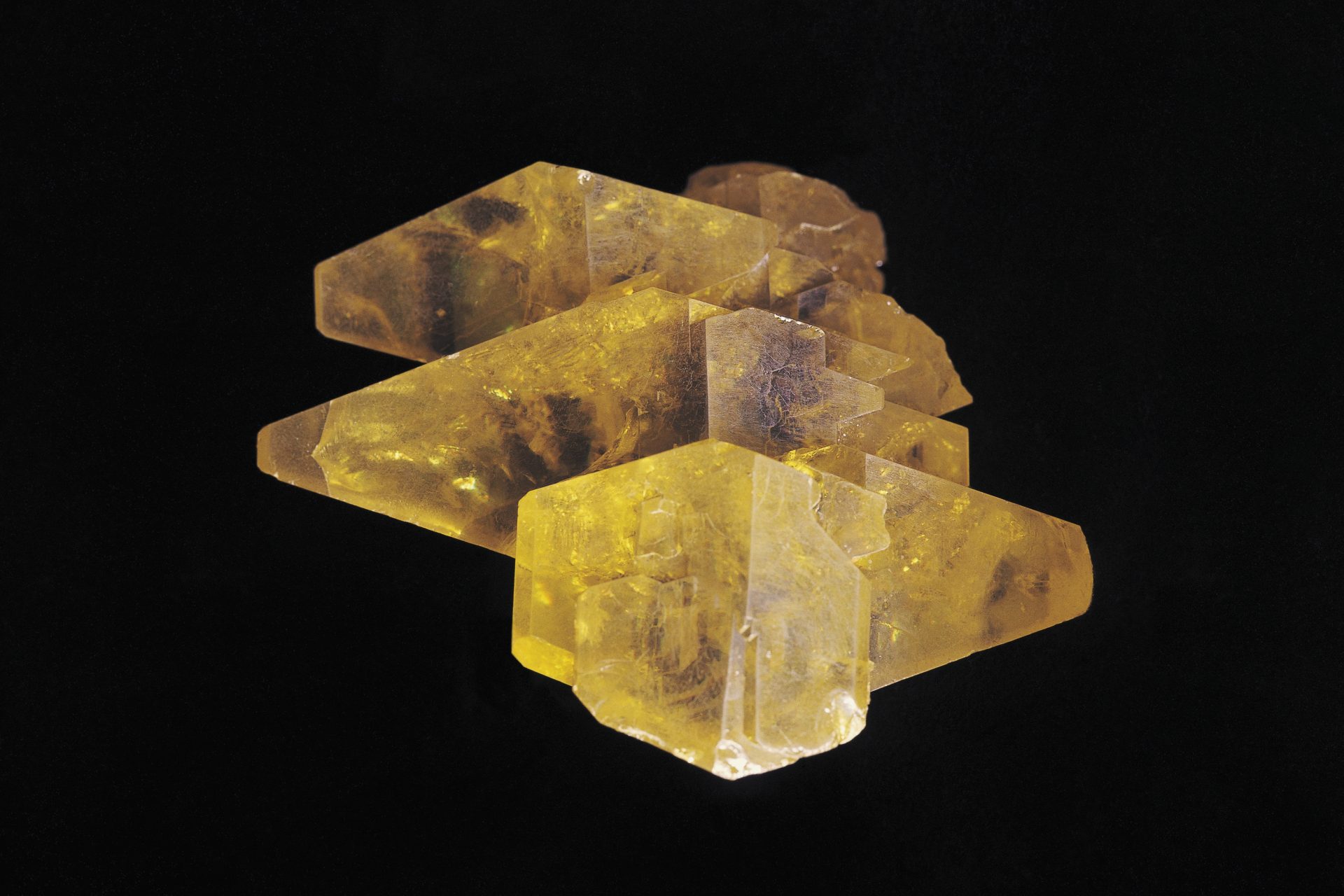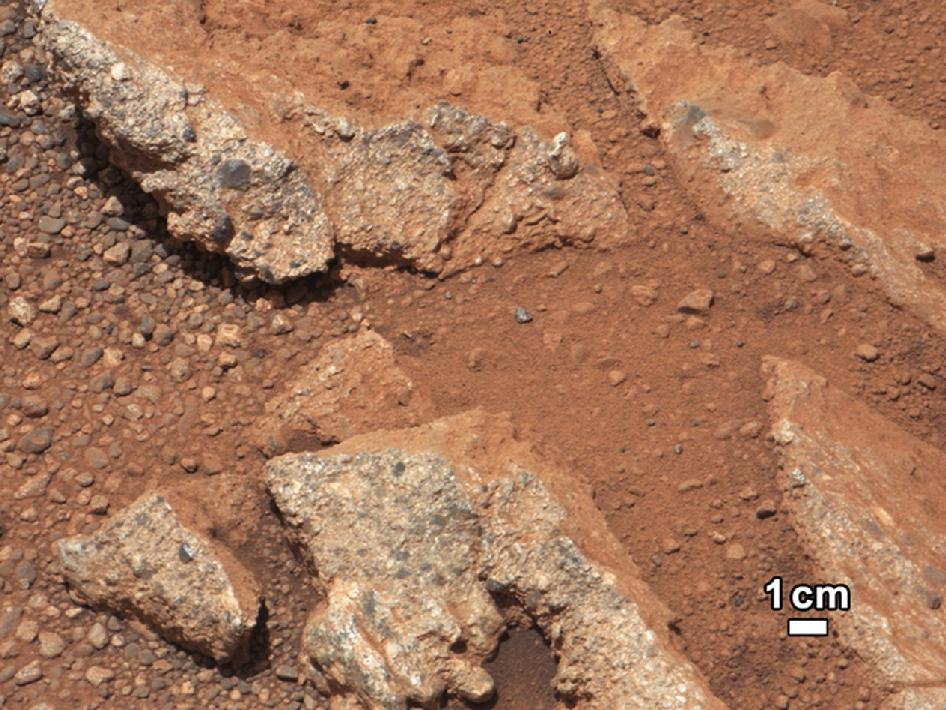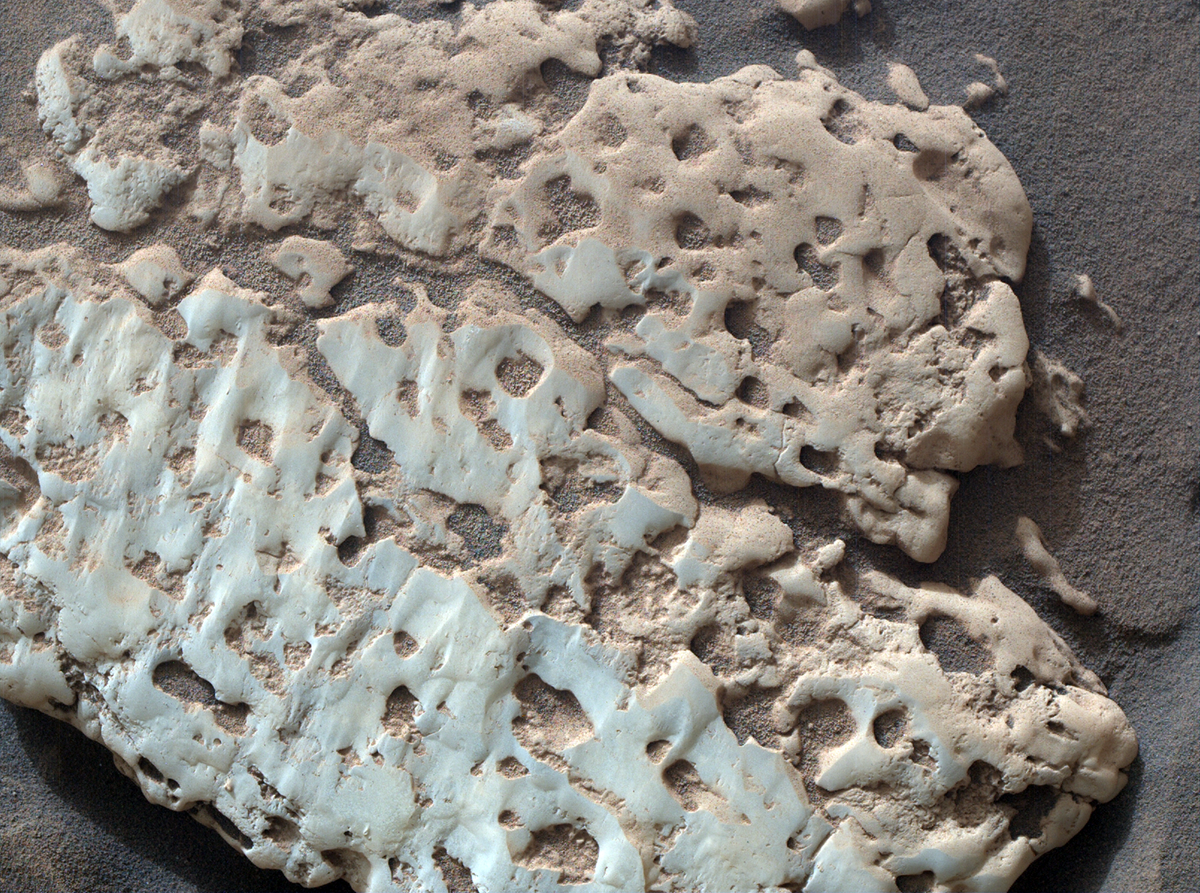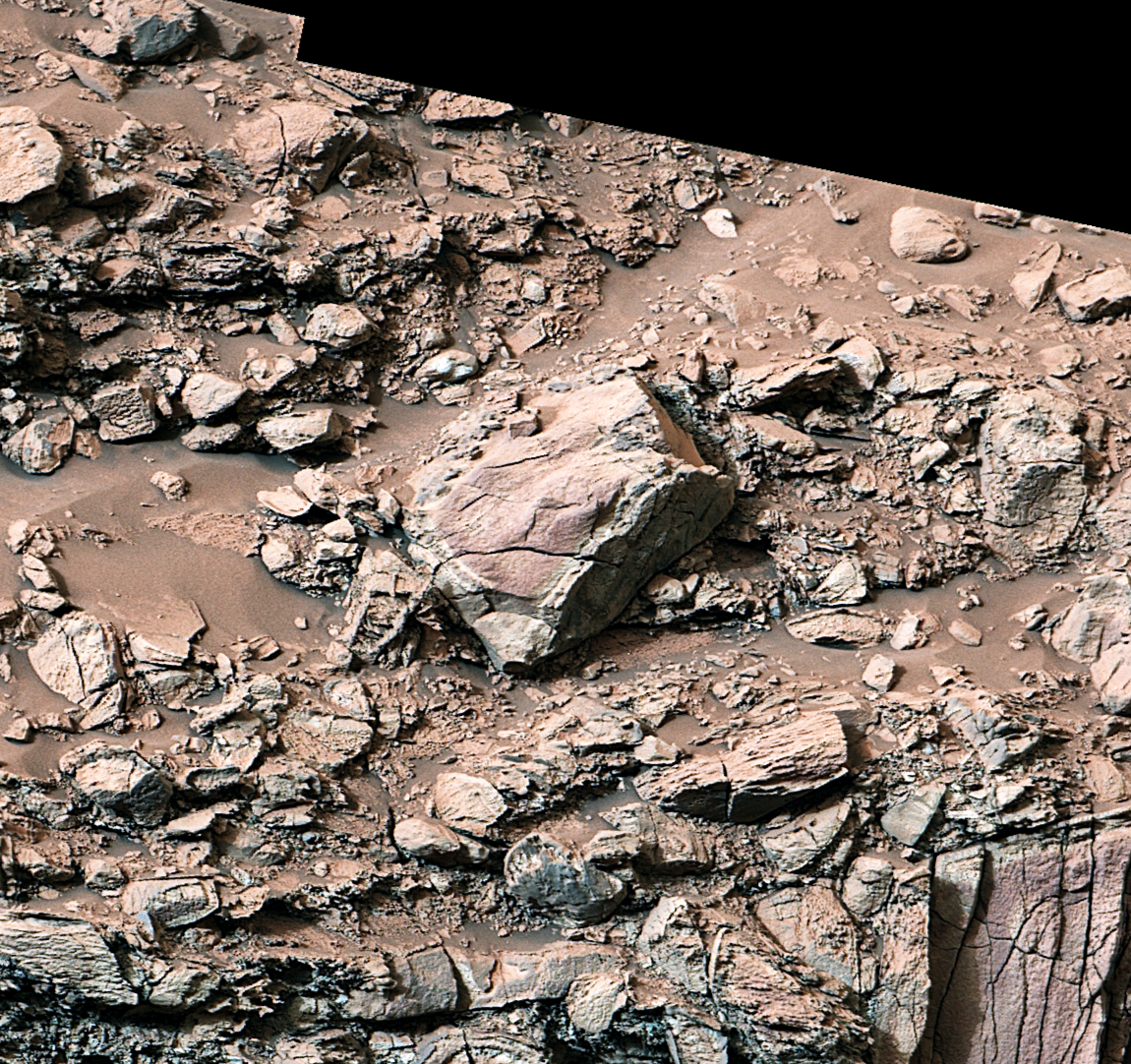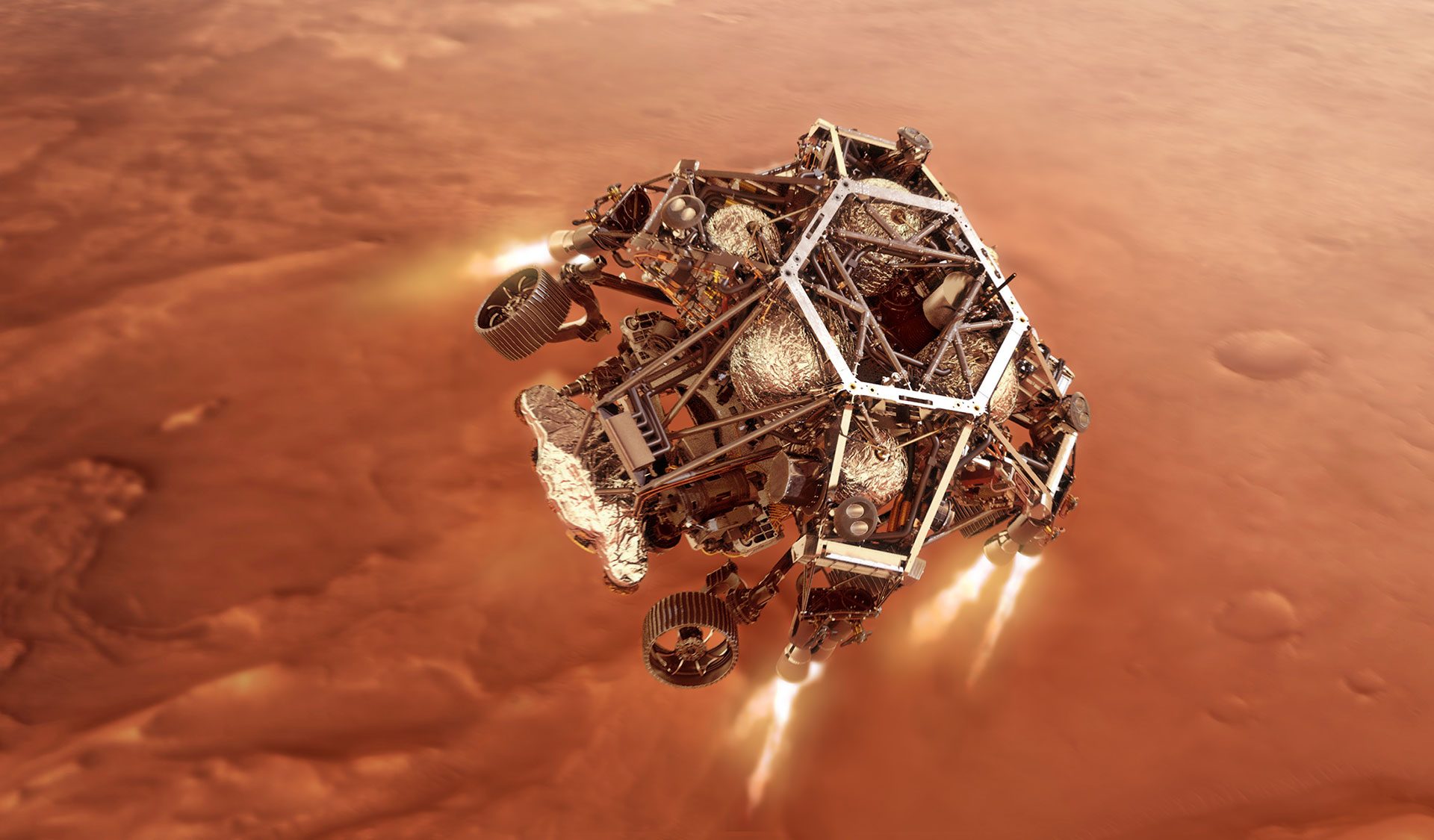NASA's latest incredible discovery on Mars could change everything we know about the planet
NASA's Curiosity Rover has made a surprising find on Mars: yellow crystals of pure sulfur. This discovery opens up a whole world of possibilities about the existence of life on the Red Planet in its ancient history.
The Curiosity Rover's mission on the Red Planet focuses on identifying conditions under which Mars might have provided nutrients for microbial life in the past.
Photo: NASA/JPL-Caltech/MSSS
Since October 2023, Curiosity has been exploring a Martian region with high concentrations of sulfates, which are salts that are generated by the evaporation of water, according to CNN.
The discovery in the Gediz Vallis Channel, an ancient area in Mount Sharp created by water and debris, is part of the Curiosity Rover's ongoing study. In the image above, you can see mineral veins from the lower part of Mount Sharp.
Since 2014, the Curiosity mission has sought to unravel the evolution of this landscape billions of years ago and it has provided the world with lots of valuable insights, though few compare to its most recent discovery.
According to CNN, the Gediz Vallis Channel is believed to have been sculpted by the flow of liquid water and debris, which left behind a trail of boulders and sediment extending several kilometers down the mountain.
Photo: NASA/JPL-Caltech/MSSS
NASA's goal now is to better understand how the landscape of the Gediz Vallis Channel was transformed billions of years ago.
Photo Credit: Wiki Commons By NASA, USGS, Public Domain
During its exploration, the Curiosity Rover accidentally fractured a rock, exposing yellowish-green crystals of pure sulfur, a first for Mars. This is how NASA made its latest discovery about the Red Planet.
Photo: NASA/JPL-Caltech/MSSS
Previous research on observations of sulfide minerals from the Red Planet has only shown combinations of sulfur with other compounds. But this latest find holds the potential to change everything we thought we knew about Mars.
"Finding a field of stones made of pure sulfur is like finding an oasis in the desert," explained Ashwin Vasavada, a Curiosity project scientist at NASA's Jet Propulsion Laboratory in Southern California, according to a statement published by NASA.
“It shouldn’t be there, so now we have to explain it. Discovering strange and unexpected things is what makes planetary exploration so exciting," Vasavada added.
Sulfur rocks have a beautiful, translucent texture, but erosion on Mars has dulled their bright color, giving them a more reddish hue.
Although sulfide minerals have been found on Mars, the discovery of elemental sulfur is unprecedented and has raised new questions about the planet's geological history. This discovery could open new avenues of research into the habitability of Mars and the possible existence of past life.
The presence of sulfur, along with elements such as carbon and oxygen, suggests that Mars may have had liquid water on its surface, an essential factor for life in the universe.
Photo: NASA/JPL-Caltech/MSSS
The Spirit Rover made important discoveries by revealing silica, suggesting the existence of hot springs in Mars' past. For its part, the Curiosity mission has provided valuable information about the geology and history of the planet, enriching our understanding of Mars.
Photo: NASA/JPL-Caltech/MSSS
This unexpected discovery underscores the excitement of planetary exploration. NASA and other space agencies are planning future missions to continue investigating Mars and look for more evidence of life.
More for you
Top Stories



